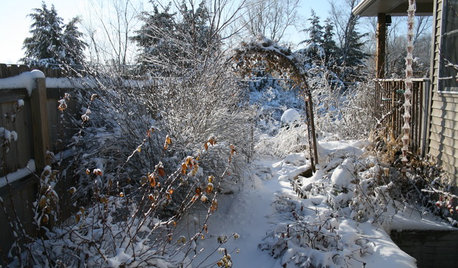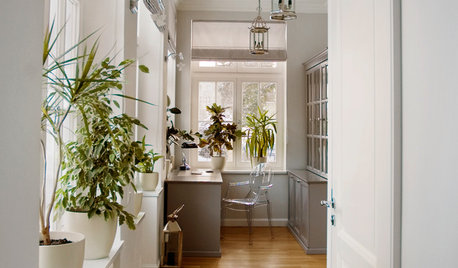If you keep killing Peace Lily or African violets, try semihydro!
summersunlight
10 years ago
Related Stories

HOUSEPLANTS8 Essentials for Healthy Indoor Plants
Houseplants add so much to our homes — and can thrive when grown in the right conditions. Keep these tips in mind
Full Story
CONTAINER GARDENSHappy Houseplants, Happy People
Potted plants add life and beauty to a room. Learn easy ways to keep them healthy
Full Story
LANDSCAPE DESIGNNatural Swimming Pools: More Beauty, No Chemicals
Keep your skin and the environment healthy with a pool that cleans itself, naturally
Full Story
HOUSEPLANTS10 Top Plants to Grow Indoors
Brighten a room and clean the air with a houseplant that cascades artfully, stretches toward the ceiling or looks great on a wall
Full Story
LANDSCAPE DESIGNFind Yourself in an Epic Garden in the Shade
Feeling hot and tired gardening in the sun? The world of shade gardening beckons you to its cool mystery
Full Story
FALL GARDENING7 Reasons Not to Clean Up Your Fall Garden
Before you pluck and rake, consider wildlife, the health of your plants and your own right to relax
Full Story
LIFE6 Ways to Beat the Winter Blahs
Snow and dark days dampening your spirits? These ideas will have you looking on the bright side
Full Story
GARDENING GUIDESHouzz Call: What’s Your Favorite Backyard Beauty?
The simple, honest daisy is this writer’s go-to garden flower. We want to hear which plant, flowering or otherwise, gives you special joy
Full Story
HOUSEPLANTSHow to Create an Indoor Landscape
Apply principles and elements of design to help your indoor garden flourish
Full Story
SAVING WATERXeriscape Gardens: How to Get a Beautiful Landscape With Less Water
Conserve water and make gardening much easier with the xeriscape approach’s 7 principles
Full StoryMore Discussions











sradleye
tapla (mid-Michigan, USDA z5b-6a)
Related Professionals
New Bedford Landscape Architects & Landscape Designers · Maple Valley Landscape Architects & Landscape Designers · Lake Oswego Landscape Architects & Landscape Designers · Marco Island Landscape Architects & Landscape Designers · Edmond Landscape Contractors · Brownsville Landscape Contractors · Desert Hot Springs Landscape Contractors · Fort Wayne Landscape Contractors · Franklin Landscape Contractors · Pleasant Prairie Landscape Contractors · Pompano Beach Landscape Contractors · Selden Landscape Contractors · Setauket-East Setauket Landscape Contractors · West Allis Landscape Contractors · Fernway Interior Designers & DecoratorssummersunlightOriginal Author
tapla (mid-Michigan, USDA z5b-6a)